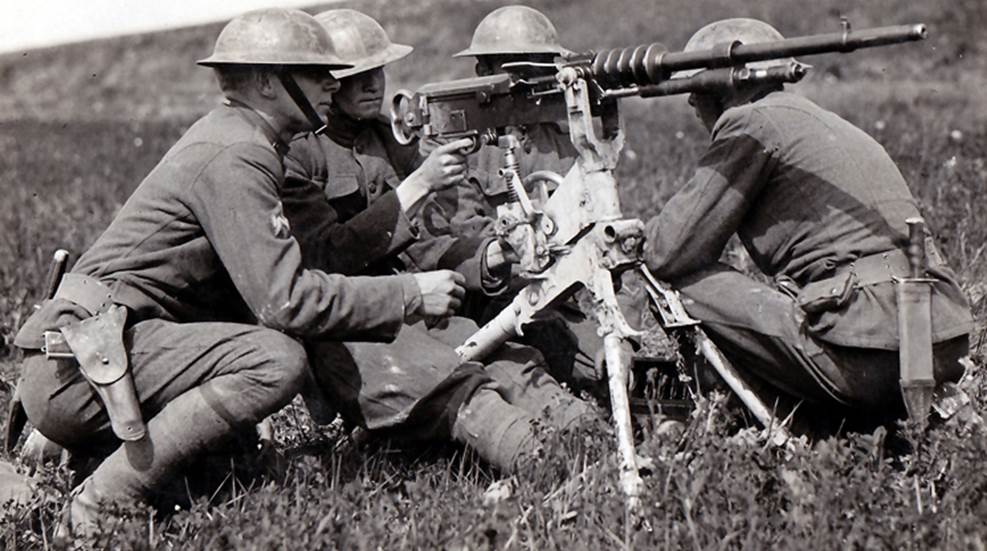Depending upon the gunner and conditions, a barrel change might be required as typically as every 200 to 250 rounds. When the hot barrel was eliminated, it was set aside till it was cool enough to utilize once again. Machine-gun teams would have as lots of as six spare barrels on hand.
Driving through a just recently protected location in Belgium, the sharp-eyed Liniewski spotted the deserted weapon in a field. Liniewski then did what any without supervision GI would have performed in that position; he stopped his truck and took the opportunity to snag a fantastic keepsake for the folks back home. As an assistance soldier, Liniewski was not familiar enough with weapons to disassemble his MG-42, so he held on to it for a while till he found a camp where German prisoners of war were being held.
The weapon remained in the Liniewski family till 2016 when his kid Marty donated the weapon to the Museum. In spite of its tendency to get too hot, the MG-42 was an outstanding weapon that was light-years of ahead of the United States counterpart, the Browning M-1919A4 maker gun. Germany produced approximately 400,000 MG-42s throughout the war, some of which are still in active service.

Taken together, all these weapons gave the Red Army a more useful series of support weapons, better able to challenge the Germans for fire supremacy on the battlefield. Totally illustrated, this study describes the technology and the methods of these gatling gun. Kept in mind authority Chris Mc, Nab sets out how these device guns were dispersed and tactically applied and supplies various examples of the weapons in action, from attack teams on the streets of Stalingrad to tank teams struggling for survival at Kursk.
How World War I: The Birth Of The Modern Black Gun can Save You Time, Stress, and Money.
Illustrated with top quality photographs and specifically commissioned artwork, this is a deep analysis of these vital tools of warfare within the Soviet forces.
Taken together, all these weapons offered the Red Army a more useful variety of support weapons, much better able to challenge the Germans for fire supremacy on the battlefield. Totally detailed, this research study discusses the technology and the techniques of these gatling gun. Kept in mind authority Chris Mc, Nab sets out how these gatling gun were distributed and tactically used and offers many examples of the weapons in action, from assault groups on the streets of Stalingrad to tank teams struggling for survival at Kursk.
Illustrated with high-quality pictures and specifically commissioned artwork, this is a deep analysis of these important tools of warfare within the Soviet forces.
The gatling gun company, commanded by a captain, had an assigned strength of 6 commissioned officers and 172 gotten men, and carried 16 weapons, 4 of which were spares. Within the business there were three squadrons and a head office area. A first lieutenant led the first squadron, while 2nd lieutenants led platoons two and three.
Everything about How The Machine Gun Changed Combat During World War I


Within each area were two gun squads, each with one gun and nine guys, led by corporals. The weapon team had one fight cart, pulled by a mule, to transport its gun and ammo as close to the firing position as enemy fire enabled. From there the teams moved the weapons and ammo forward by hand.
The battalion had a strength of 16 officers and 377 enlisted men and was motorized. However, it had only two business, similar to the other gatling gun business in regards to workers and weapons. Each gun squad used a special motor cars and truck to carry its workers, weapon and devices. The battalion was generally in department reserve, ready to perform objectives as the department leader purchased.
In this function the weapons were positioned 300 to 1000 meters to the back of the front line. When they employed their weapons because style, the gatling gun officers often faced opposition from the rifle business commanders, who preferred to have the guns further forward, fearing that their infantrymen would be at danger of stray low rounds as they advanced under the overhead gatling gun fire.
They soon found that the maker weapons were high concern targets for enemy fire, and that it was useful to have the guns at some distance from the infantry positions. Given that opponent gatling gun postured the biggest danger to the attacking soldiers, the device weapon teams made every effort to find the enemy weapons and to focus their fire upon them.
Getting The American Machine Gun Battalions In World War I To Work
A percentage of the guns was kept back as a reserve under command of the machine weapon officer. 6Machine weapon tactical doctrine determined that in the defense the Hotchkiss guns ought to just rarely be located within 100 backyards of the front line and that a minimum of two-thirds of the guns must be echeloned back through the entire defensive position, located so that surrounding guns would be mutually supporting.

7 To discover other features on the go to our THE DOUGHBOY CENTER wishes to continually broaden this function. Additions and remarks on these pages may be directed to:.
I was impaled on this. My only fear was that he would push the trigger which would have made a hell of a mess. In the meantime, my sergeant who was near he saw me; can be found in close; shot the fellow and after that hoisted me, with the help of another man, off the bayonet.
He was dead and it wasn't pleasant. A bayonet injury straight it goes in it hurts and the withdrawal is most likely even more distress than the 'putting in' because the 'putting in' is instantaneous. Another kind of weapon was the trench club. These might be employed on trench raids and in close quarter fighting.